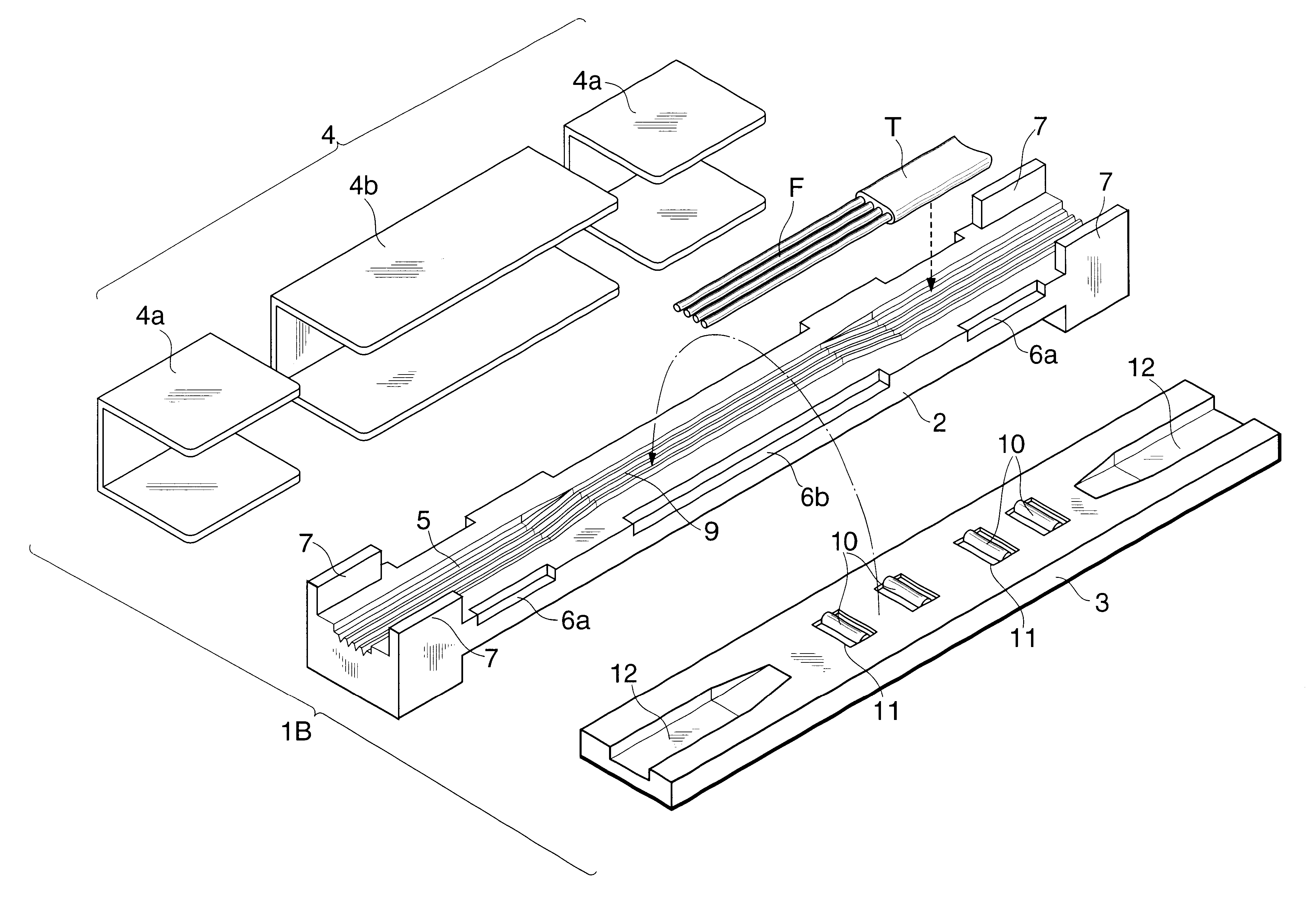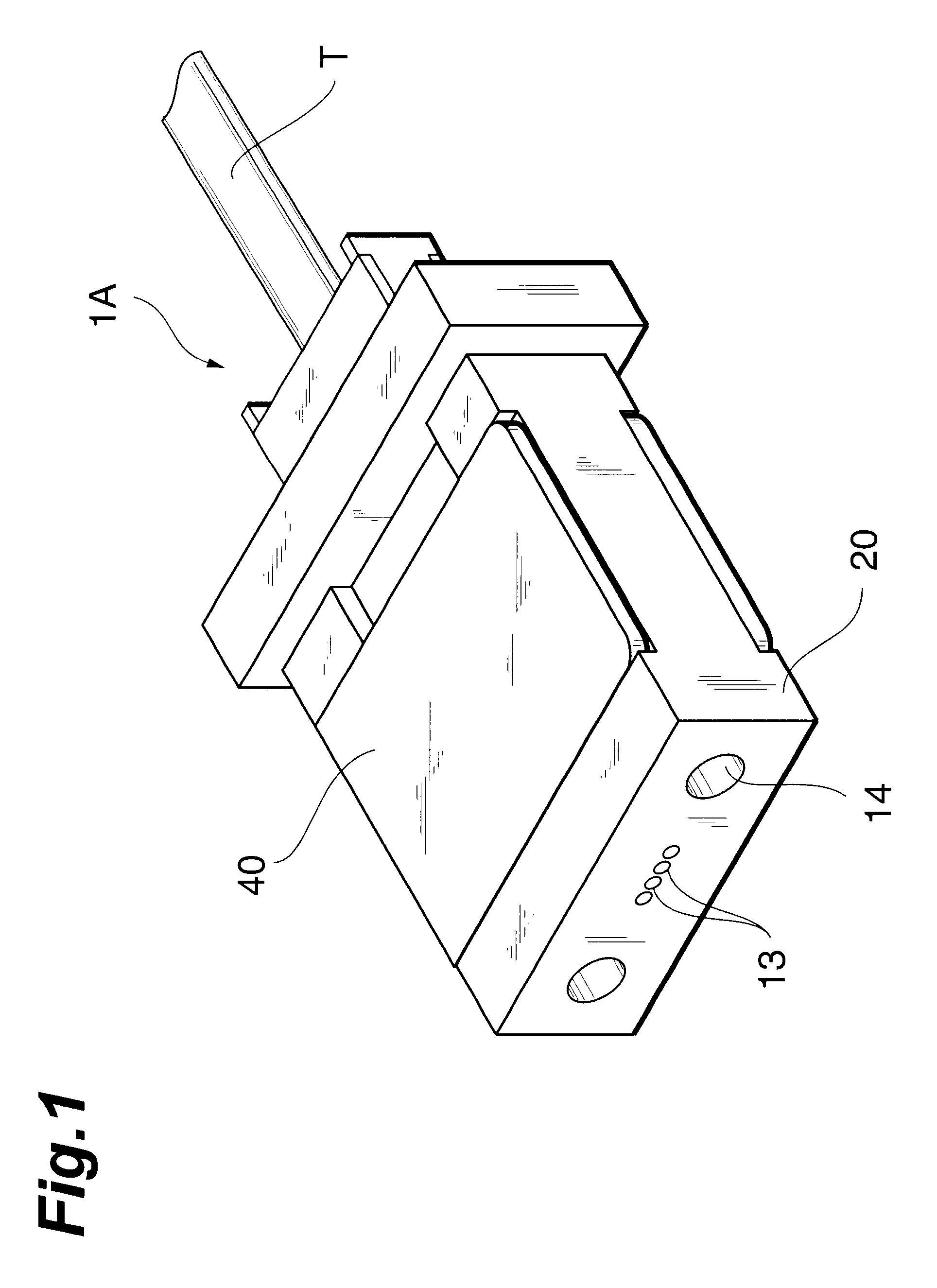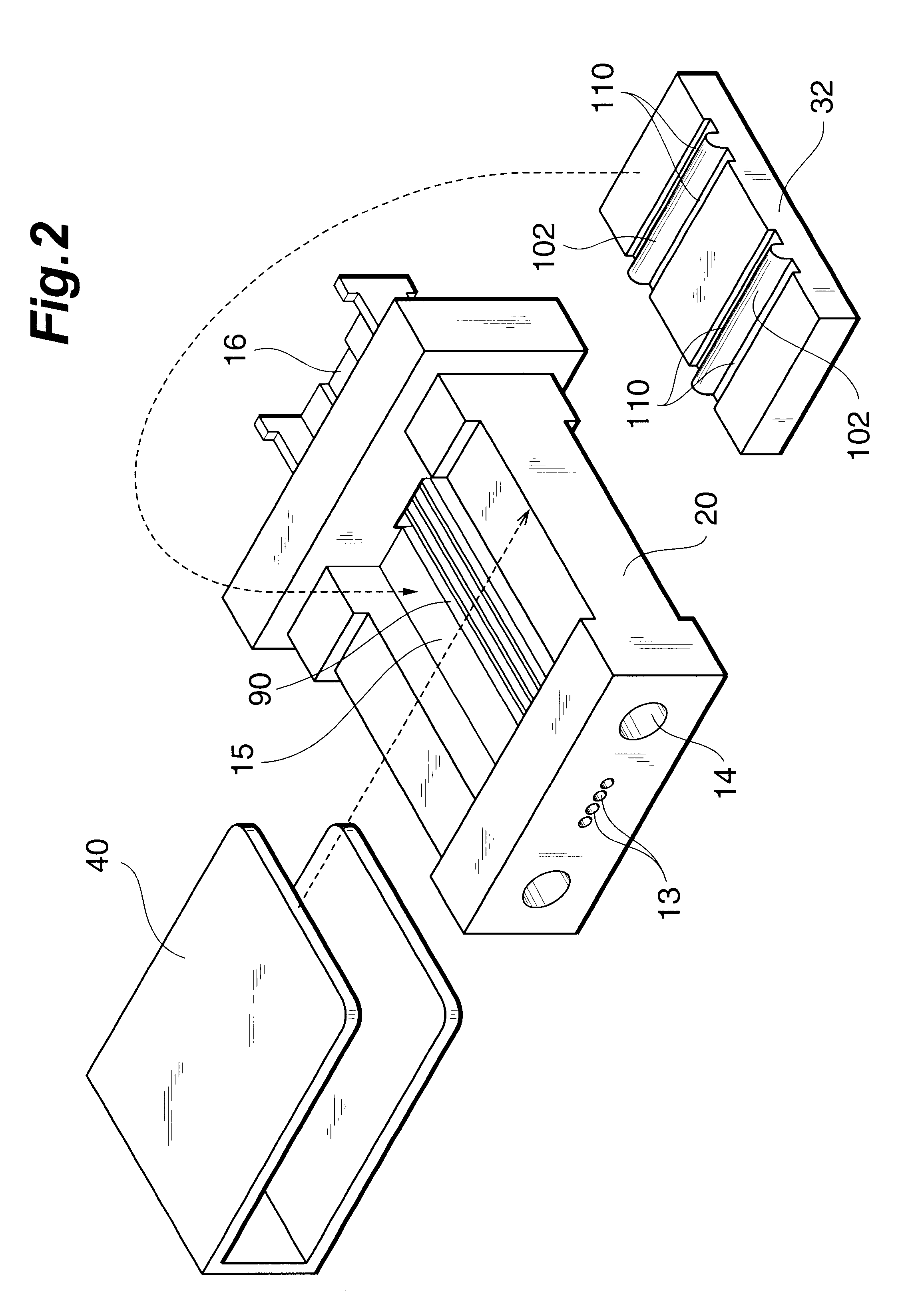Optical fiber holder
a technology of optical fiber and holder, applied in the field of optical fiber holder, can solve the problems of inability to accurately measure the diameter of the holder, and achieve the effects of reliable holding, easy deformation of small projection, and no deformation of transmission characteristics
- Summary
- Abstract
- Description
- Claims
- Application Information
AI Technical Summary
Benefits of technology
Problems solved by technology
Method used
Image
Examples
first embodiment
FIGS. 1 and 2 show an optical fiber holder 1A of the present invention. As shown in FIGS. 1 and 2, the holder 1A of this embodiment is comprised of a base member 20 or a so-called ferrule, a lid member 32 received in the base member 20, and a clamper 40 for sandwiching the base member 20 and lid member 32. The holder 1A of this embodiment is abutted against another holder 1A (not shown), so that optical fibers in the two holders are optically connected to each other. For this purpose, the end portions of optical fiber receiving holes 13 for accommodating the distal end portions of the optical fibers, and the end portions of pin insertion holes 14 in which guide pins for positioning the holder 1A are to be inserted, are formed in the distal end face of the base member 20.
The base member 20 is made of a synthetic resin, e.g., a glass-filament-reinforced epoxy-based resin or LCP (Liquid Crystal Polymer), and has an receiving cavity 15 at its center to accommodate the lid member 32. Fo...
second embodiment
The embodiment described above is a mechanical clamping type optical connector which holds a plurality of optical fibers F by aligning them parallel to each other. However, as shown in FIGS. 3 and 4, this embodiment can also be applied to a mechanical splicing optical connector which holds optical fibers F face to face. the present invention shown in FIGS. 3 and 4 will be described.
A holder 1B according to this embodiment is a multi-fiber mechanical splicing optical connector, and is comprised of a base member 2, lid member 3, and clamper 4, as shown in FIGS. 3 and 4.
The base member 2 is made of a synthetic resin, e.g., a glass-filament-reinforced epoxy-based resin, and has four parallel positioning grooves 9 at the central portion of its surface for positioning and aligning optical fibers F. Guide grooves 5 which continue to the positioning grooves 9 are formed at the two end portions of the base member 2, so that the optical fibers F can be easily guided to the positioning grooves...
PUM
 Login to View More
Login to View More Abstract
Description
Claims
Application Information
 Login to View More
Login to View More - R&D
- Intellectual Property
- Life Sciences
- Materials
- Tech Scout
- Unparalleled Data Quality
- Higher Quality Content
- 60% Fewer Hallucinations
Browse by: Latest US Patents, China's latest patents, Technical Efficacy Thesaurus, Application Domain, Technology Topic, Popular Technical Reports.
© 2025 PatSnap. All rights reserved.Legal|Privacy policy|Modern Slavery Act Transparency Statement|Sitemap|About US| Contact US: help@patsnap.com



